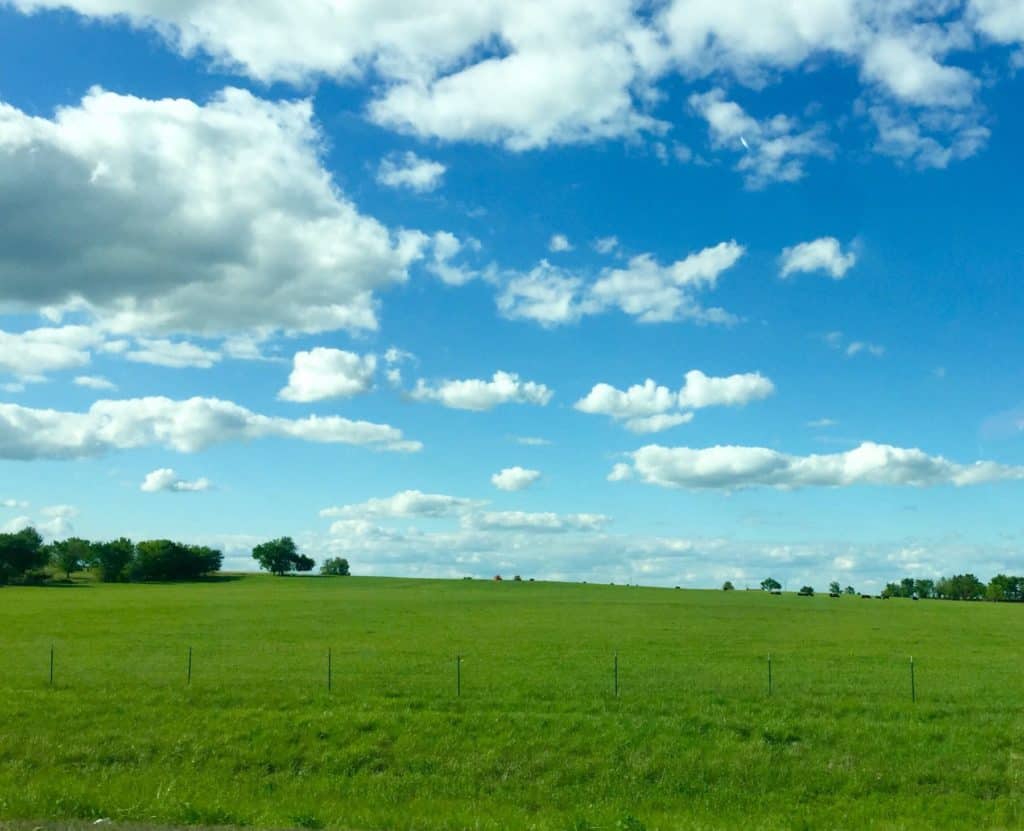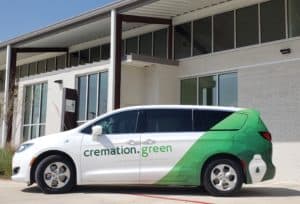If you consider that the history of green burial stretches back to the beginning of mankind as we know it, then it’s safe to assume green burial will continue long into the future. How common it will be is the real question.
If you consider that the history of green burial stretches back to the beginning of mankind as we know it, then it’s safe to assume green burial will continue long into the future. How common it will be is the real question.
Despite the fact green burial is the most natural end of life option and oldest known form of disposition, modern day green burial was all but nonexistent in the U.S. until recently. The National Funeral Directors Association (NFDA) reports that only 1 in 20 U.S. burials in 2019 were considered green, but that’s a dramatic increase compared to just a decade ago.
As Americans have adopted more eco-friendly lifestyles they have become open to the idea of having a green burial that is far from the traditional funeral service they’re familiar with. There are clear societal shifts and trends that are guaranteed to change the way we approach burial in the years to come.
More Interest Today Means More Green Burials in the Near Future
As the overall burial rate steadily declines, green burials are actually on the rise. The 2023 Consumer Awareness and Preferences Report from the NFDA found that interest is increasing for green funeral services in general. The number of people exploring green funeral options rose from 55.7% in 2021 to 60% in 2023.
The rate of green burial may be just 5% of all burials by some estimates, but that’s much higher than in 1960 when 96% of the population opted for a traditional burial and the remainder were cremated. Virtually no one had a green burial in the U.S. 60 years ago, and if they did it likely wasn’t recorded in any official databases.
Based on recent statistics, the number of green burials could easily double in the near future. The 2022 Annual NFDA Consumer Study found that 11.3% of respondents who are 40 and older prefer green burial over other forms of disposition. This is even more notable considering the NFDA estimates the overall burial rate will drop to just 16.3% by 2040. It could indicate a dramatic shift to come in burials in which the majority of burials are considered green 15 years from now.
Cemeteries around the country have reported a 72% increase in demand for green burials. Surprisingly, millions of Baby Boomers that have buried their own parents in the “traditional” way are among those most interested in green burial services. A Funeral and Memorial Information Council survey from 2015 found that 64% of people 40 and older were open to considering a green burial. In 2010 just 43% of 40+ year olds said the same.
The clear takeaway is that there’s a growing preference for green burial that will likely continue. But people aren’t just considering it. The number of people choosing green burial is growing at a very fast pace and will likely continue growing over the next couple decades.
More Green Burial Providers Will Enter the Market With More Options
Back in 2017, Kate Kalanick, the executive director of the Green Burial Council (GBC), told AARP that their list of green burial providers had climbed from just one in 2005 to more than 150 by 2016. By March 18th, 2022 the GBC had identified 350 green burial cemeteries in the U.S. and Canada. As of July 6, 2023, there are now 418 cemeteries that offer some form of green burial.
Establishing a completely green burial cemetery or a conservation cemetery is still a slow-going process in many areas that have to create regulations for the practice first. What’s more likely to happen in the immediate future is a surge of product providers.
Green burial involves far fewer tangible objects compared to traditional burial, but the few things that are involved can be in rather short supply or the options are limited. Pair that with consumer demand for a more personalized funeral experience and it’s easy to see why product providers are interested in green burial. Linen shrouds, wicker caskets, biodegradable urns – as the market increases for green burial goods more providers will be there to serve people’s needs.
As the old saying goes, competition breeds innovation. Consumers can expect to see even more innovative products come to market as the idea of green burial becomes widely accepted and more providers begin offering unique products.
Growing Concern With Climate Change Will Encourage Green Burial
As we see distinct, troubling changes in environments across the globe, more people will gravitate towards green burial. Many industries are in the midst of a green movement. Not just because of consumer demand, but also because of the business owner’s own personal beliefs.
Recent surveys show more Americans believe climate change is a very serious issue with each passing year. A 2018 survey from Yale and George Mason University found that 69% of people in the U.S. are somewhat worried about climate change and 29% are very worried. It was the highest percentage recorded since the survey started in 2008.
A more recent Pew Research Center survey found that 54% of Americans now see climate change as a major threat and more than two-thirds of Americans think that the U.S. government should prioritize the development of alternative energy sources as well as working toward becoming carbon neutral by 2050. The majority of Americans also believe not enough is being done to combat climate change on a large scale.
Many individuals are choosing to take on the responsibility themselves by making greener lifestyle (and end of life) choices and demanding that greener services be offered.
In the case of green burial, funeral directors themselves see the personal ecological benefit and public health benefits of offering these types of services. Given that concern about the state of the environment isn’t expected to decline, green burials will likely become more common, particularly in major metros.
The Funeral Industry Will Continue Adapting to Meet Green Burial Demand
Funeral directors pay close attention to consumer trends, and the increased interest in green burial hasn’t escaped them. Right now, funeral homes around the country are revamping their business models to incorporate more green services, including natural burial options.
In the coming years consumers can expect to see more funeral homes offering:
- Green caskets made of untreated pine or wicker.
- Formaldehyde-free embalming solutions.
- Preservation that doesn’t include embalming fluid.
- Paperless memorial services.
- Highly customizable viewing and memorial services that have green features.
Because marketing a business as green isn’t regulated by state governments, it’s important for consumers to do their research to determine how green the services actually are. The Green Burial Council and the National Funeral Directors Association (NFDA) offer green certifications for funeral homes that meet certain eco-friendly standards. We’ll likely see more organizations taking action to add legitimacy to green burial services with certifications, seals of approval, etc.
Expect to See More Hybrid and Green Cemeteries Around the U.S.
You can’t have green burials without green cemeteries or hybrid cemeteries that are set up to accommodate both traditional and green burials. As more people choose natural burial, the need for more green cemeteries naturally increases.
Conservation cemeteries are becoming very popular among those who choose green burial for environmental reasons. These cemeteries are completely natural and resemble a state park with wooded areas and trails. Typically proceeds from burial plot sales go towards expanding and protecting conservation land around the cemetery.
Hybrid cemeteries will also likely see an increase in number. Offering traditional burials in some sections and green burials in others, a hybrid cemetery aims to serve everyone who prefers burial. It will also be much easier for existing cemeteries to get approval for green burials compared to establishing a new 100% green cemetery.
Rising Rate of Cremation Could Have a Positive Impact on Green Burial
The most significant change in funeral services in recent years has been the move toward cremation services. In 2015 more Americans were cremated than were buried for the first time on record, and the divide has grown since then. On the surface this might seem to suggest green burials will decline as well, but an increase in cremation could promote green burial.
When many people think of cremation they envision storing the remains in an urn on a mantle over the fireplace or scattering the ashes in a scenic spot at sunset. In actuality, over 35% of families that cremate a loved one choose to bury the remains.
Given that environmental concern is one of the top reasons people choose cremation over traditional burial today, it’s safe to assume that if a family plans to bury the cremated remains green burial would be of interest. With 59.3% of Americans now being cremated, even a small portion of the third that are buried afterward would boost the rate of green burial substantially.
The NFDA estimates that by 2040 nearly 79% of the population will be cremated, which means green burial could be impacted for years to come.
Cremation.Green has working relationships with green cemeteries and hybrid cemeteries across the state of Texas. If you or a loved one is interested in learning more about green burial or burying cremated remains please give us a call anytime of day, any day of the week.
RESOURCES:
Thinking About Having a ‘Green’ Funeral? Here’s What to Know. March 22, 2018. New York Times.
2022 NFDA Cremation & Burial Report, July 2022
6 Funeral Trends That Are Changing Death Rituals. November 20, 2017. AARP
Media Packet. Green Burial Council.
Green Burial Cemeteries in the U.S. and Canada. July 8, 2023. New Hampshire Funeral Resources and Education.
Statistics. May 22, 2023. National Funeral Directors Association.






